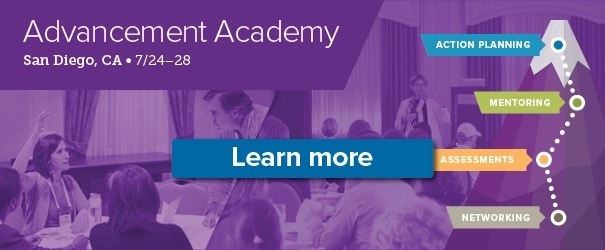As this year’s recruitment cycle winds down and you begin to make final decisions on applicants for next year’s class, it’s time to consider what your Admission Office did well this cycle and how it can improve for the next. One of the areas of concern for schools—turning to listservs and forums for insight—is re-enrollment.
One way private-independent schools bypass this headache is to implement “perpetual” or “continuous” enrollment. In such an arrangement, the student is automatically re-enrolled for the next semester if the student has maintained sufficient standing to warrant the invitation to return (e.g., satisfactory behavior and academic performance) and the student’s account is paid in full.
Is this a universal solution for every private school? Considering that every school is unique, maybe not—but it’s certainly worth examining further.
On the One Hand…
The most apparent advantage of the continuous enrollment model is that, since families are automatically re-enrolled in the system, time spent tracking down and re-enrolling current students is significantly reduced. Indeed, as the Northshore Christian Academy of Everett, Washington, told its families in a letter last January:
Past parent surveys have suggested that NCA consider a continuous re-enrollment program. We are streamlining our current enrollment process to reduce paperwork and make it logistically more convenient for families.
NCA also alluded to the elimination of mandatory family “appointments” for the next year’s scheduling, thanks to its new continuous enrollment process.
This letter also highlights what NCA's families think of the current process. Ask yourself: What do your families think of their current process? Do they prefer to come in and have appointments with the staff, or would they rather have this process completed automatically? In NCA's case, parents wanted this change—and the school responded accordingly.
There are other advantages to the perpetual enrollment system. When Grace Christian School in Anchorage, Alaska, explained its move to continuous enrollment on its website, it emphasized how its tuition assistance deadlines were after income tax deadlines—paperwork frequently required for application paperwork in both regular and financial aid applications.
Continuous enrollment allowed the school to hold a student’s place in his or her class, even if the student’s enrollment was contingent upon financial aid.
But on the Other Hand…
In its completely automated form, perpetual enrollment could possibly lead to misunderstandings between a family and the school. As most re-enrollment programs are contingent upon a student’s account being up-to-date, some families could assume that the student is enrolled for the next school year, even though they’re behind on payments. However, not all schools save space for current students when they fall behind in payments.
Cascade Christian School in Pierce County, Washington, removes students whose accounts are delinquent from active status to the general wait pool. According to the FAQ page, a family must make its Continuous Enrollment payment—akin to a regular re-enrollment deposit—by the due date. If not, the family is not only assessed a late fee, but the student also remains in “open” status and is placed in the wait pool to be placed in a class “as space is available.”
The transfer from traditional re-enrollment plans to a continuous one, then, requires much communication between the school and the families. Some Admission Directors have shared techniques on our Admission Directors’ e-list, such as having Superintendents create video messages about the switch from traditional enrollment to perpetual enrollment and including a detailed letter in families’ (final) traditional re-enrollment packets.
Having an administrator do a video to parents about such a dramatic change is a great way to demonstrate that this switch isn’t some sort of last-minute “change for the sake of change.” It demonstrates school solidarity and a collaborative spirit between all administrative levels of your school that may be useful when countering potential backlash from the way your school has always done it. (It helps, too, if you ask your parents ahead of time if they’d like a more streamlined process, as Northshore Christian Academy did in its parent surveys.)
Perpetual or continuous enrollment is not going to be the panacea for every school, but it does have its advantages over the angst-ridden and time-consuming traditional re-enrollment process. Consider carefully whether your private school would benefit from this type of automation; perpetual enrollment may be the best solution to a hard problem for the Admission Office!
 hbspt.cta.load(2626348, '0deffb9c-8d71-4919-9bd5-b0c1a2c72746', {});
hbspt.cta.load(2626348, '0deffb9c-8d71-4919-9bd5-b0c1a2c72746', {});
Additional ISM resources:
ISM Monthly Updates for Admission Officers Vol. 10 No. 4 Enrollment Contracts: What You Need to Know
ISM Monthly Updates for Admission Officers Vol. 11 No. 3 Re-enrollment as Re-recruitment
ISM Monthly Updates for Trustees Vol. 11 No. 5 2012 ISM Re-enrollment Survey Results
Additional ISM resources for Gold Consortium members:
I&P Vol. 36 No. 5 The Enrollment Management Cycle
I&P Vol. 38 No. 2 Who is Responsible for Enrollment Management?





